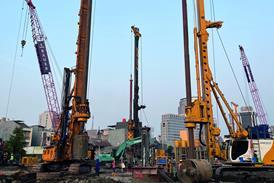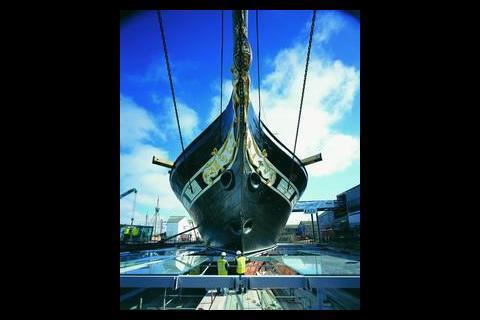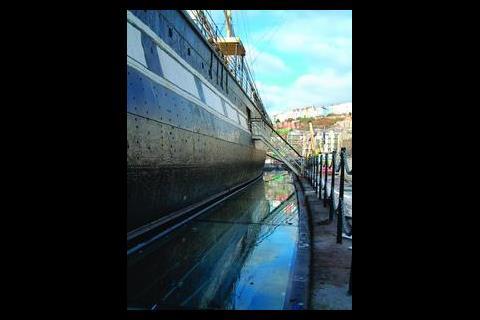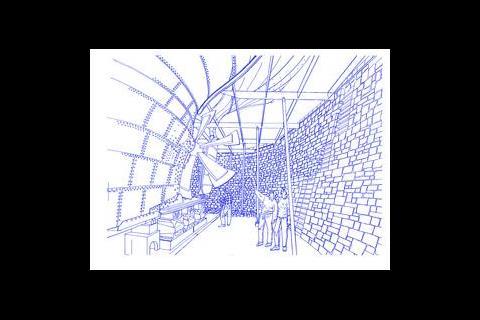Brunel’s SS Great Britain has survived two wars, carried 16,000 emigrants to Australia and covered a million miles. And now it has beaten the biggest threat of all – corrosion.
The SS Great Britain may not have touched the water for 30 years, but that hasn’t made it immune to the effects of age. While humans turn to the latest creams, injections and even plastic surgery to slow the aging process, Brunel’s 160-year-old steamship needed its own miracle cure to halt the corrosion that has been steadily devouring its metal hull.
After a working life spanning 100 years and a million ocean miles, the SS Great Britain was salvaged and returned to Bristol in the early 1970s. Since then it has sat in dry dock, however the lower hull has been corroding so rapidly – as a result of the chloride contamination in the metal – that it was in danger of partially collapsing.
A study concluded that the only way of providing long-term, cost effective and reversible preservation of the metal was by creating a stable environment, where the relative humidity is kept at or below 20% – the level at which electro-chemical corrosion will stop.
This is being accomplished by installing a horizontal glass plate around the waterline of the ship to create an airtight space between the hull and the walls of the dry dock. The glass is sealed to the dock wall and the hull of the ship using a watertight flexible membrane, which allows for slight movements of the hull. A 50 mm layer of water on the glass plate will also give the impression that the ship is afloat and provide a thermal jacket to the dry dock below to reduce heating and cooling energy.
Humidity in the visitor space below the glass is controlled by two constantly running air-handling units. These consist of a process section and a regeneration section: the former houses a hygroscopic wheel to remove excess moisture and take the humidity down to 20%; the latter includes direct gas-fired heaters to dry the desiccant, after which the air is passed via air-to-air plate heat exchangers to the exhaust.
Air is supplied to the space at between 1.7 m3/s and 5.7 m3/s, depending on ambient humidity. A similar but larger system is installed in the ship’s boiler room to control the internal temperature and humidity, and to protect the inside of the hull from corrosion.
Six wireless temperature and humidity sensors are fixed around the ship’s hull, with a further 16 inside, which are linked to the energy management system and used to control fan speed and burner rate. Circulating air temperature is controlled by an indirect gas-fired heater battery and a water-cooled chiller battery in the air path to keep the temperature between 16°C and 23°C. Free cooling is provided using water from the harbour as the cooling medium for the dehumidified environment and the water layer on the glass plate.
The £11.3m conservation project, which includes repair work to the dock walls, is due for completion on 16 July, and with any luck will preserve the ship for another 100 years – more than can be said for even the most expensive plastic surgery.
Project manager
Capita Symonds
Contractor
Bluestone
M&E consultant
WSP
Structural consultant
Arup
Architect
Alec French Partnership
Conservation consultant
Eura Conservation
M&E contractor
MJN Colston
Controls
Tour Andover Controls
Drives
Danfoss
Source
ºÚ¶´ÉçÇø Sustainable Design




















No comments yet